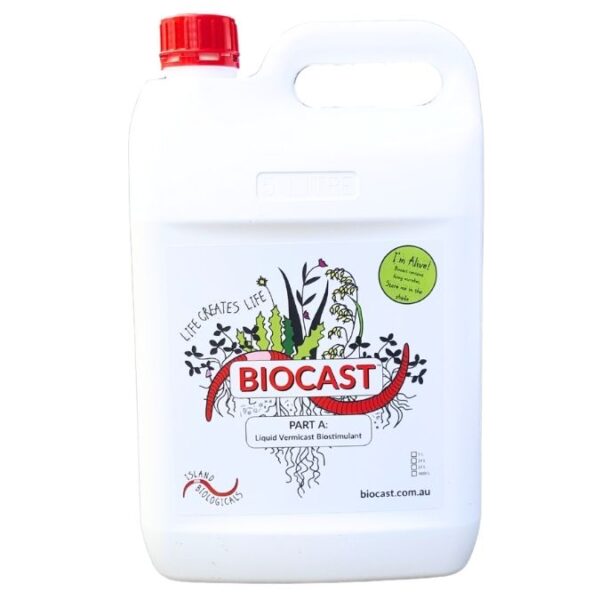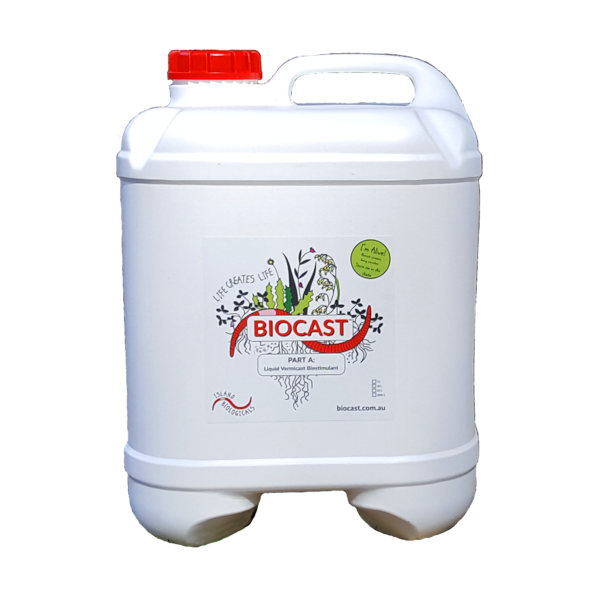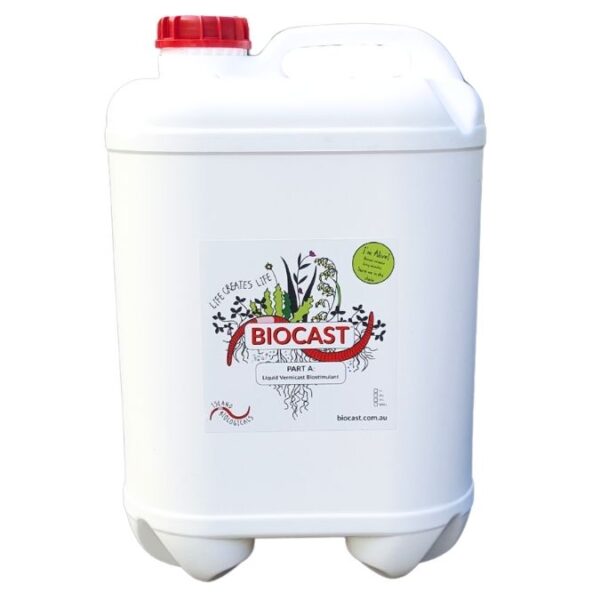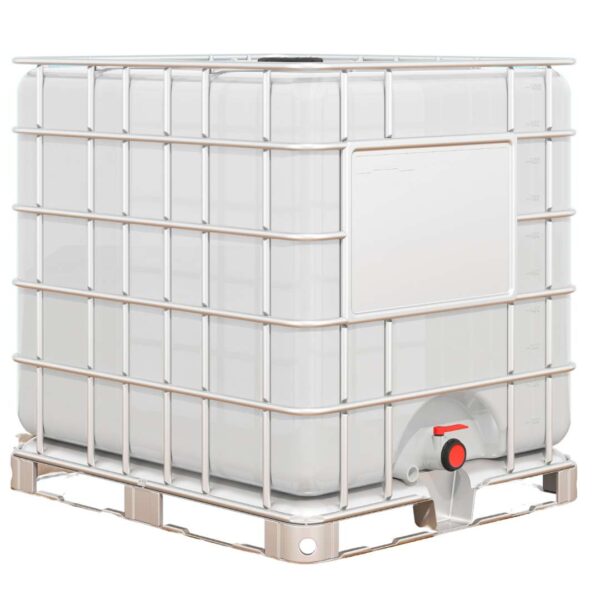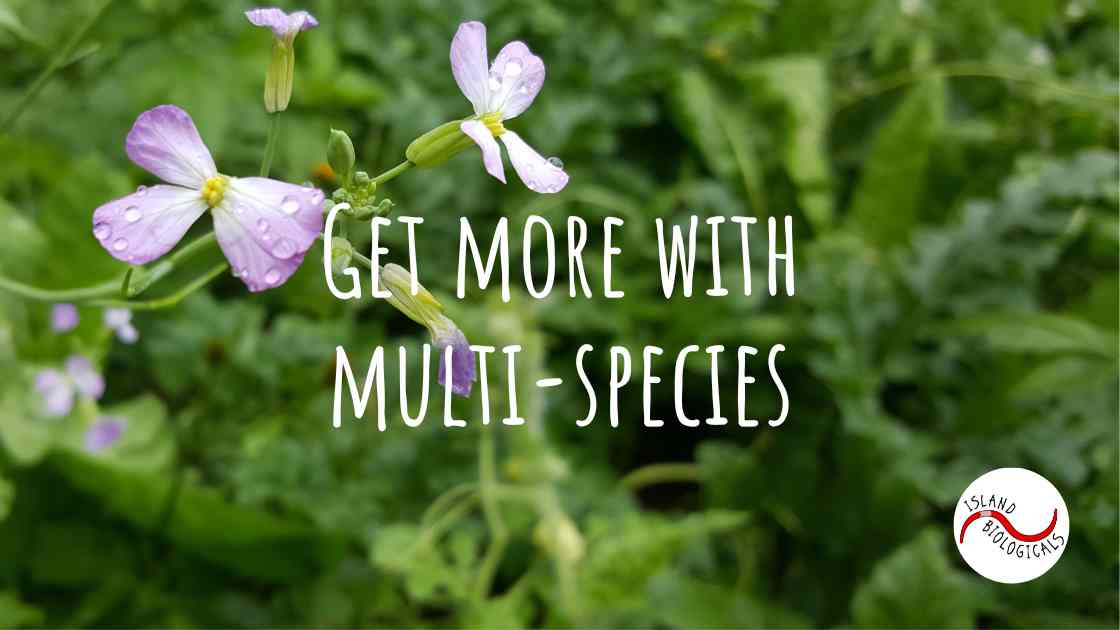
Get more with multi-species planting
As we look around our island at the moment, we see it becoming brown, and our neighbours are struggling to have feed for their animals. Yes, lack of rain is starting to bite; but we’re also in the time of awkwardness that happens every year when the winter rye has gone but the summer kikuyu hasn’t kicked in yet. If you’re in this pickle, we would like to offer some hope in the form of an introduction to multi species planting.
Why plant multi-species?
It’s the same as you’d plant anything, right – to get more than what you had before. Conventional reductionist and linear thinking (no offense, this is how most of us are trained) would say that you are planting to get X outcome, such as feed for your cattle, or a cash crop harvest. Nature would say ‘why settle for just one outcome?’, and we would agree. Smart, opportunistic farmers are showing that they can reach X outcome and then some; and they can get all sorts of other benefits too.
What do we mean by multi-species planting?
In short, it means using seeds of two or more species of plants, the more the better. What we would like to add is the strategic choice of plants based on research coming out of the Jena Experiment in Germany, showing that diverse ‘functional groups’ are often more important than total species diversity. Their functional groups are grasses, legumes, tall herbs and small herbs; and if you have a species representing each in your mix, even as a small percentage, you will reap the benefits. Having diverse functional groups means you are more likely to get plants that complement each other, rather than competing.
What are the benefits of multi-species?
There are so many potential benefits of working with multi species mixes that we will probably miss some here, but let’s have a go:
Pasture persistence
One of the key benefits of using mixes of the four functional groups is that plant structures are all very different, meaning that more plants can occupy the same amount of land. This applies at a set point in time, and over time as seasons change and plants with tolerance to different conditions come to the fore. Australian Soil and climate scientist Walter Jehne introduced us to the phrase ‘longevity of green’ as the number one thing we can do in healing the planet.
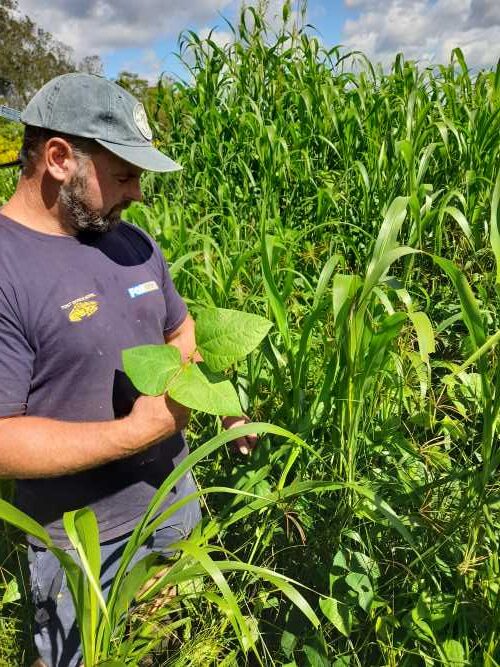
More foliage
More plants mean more leaves. This is clearly demonstrated in the Jena Experiment, and with local experiences. If you are a grazier, this means more feed/ ha/ year. It can also mean feed at those traditionally challenging times of year such as our area is experiencing at the moment.
As just one example, we are always blown away by the amount and quality of forage when we visit Chris Eggert’s dairy farm ‘Oxhill Organics’ at Wauchope. Chris has planted multi-species into his existing grass pasture. He still has the same amount of grass, and now has more of everything else as well.
Chris had a chat with Lee back in April about some of the ways he’s working with multi-species on his place – check out the video above of their chat!
Benevolent microclimate
More leaves also means more shade for the soil, protecting soil life from harsh temperature extremes, and protecting soil moisture levels. It creates a more beneficial micro-climate within your paddock, reducing stress on your system. Did you know that earthworms love shaded soil?
Weed suppression
Do you know what doesn’t like covered, shaded soil? Weeds. While we would say that on the whole, yes ‘weeds’ increase your plant diversity and often are acting to heal your land; they are also symptomatic of deeper problems with your soil and/ or management style, and can be pains in the backside. Get a competitive advantage on weeds with desirable multi-species.
Beneficial insects
On the subject of invertebrates; a multi-species mix can result in more beneficial insects, such as your pollinators, should you give them flowers. Earthworms and other detritivores will enjoy the improved forage, assisting with nutrient cycling into your soil. You could also have improved habitat for predatory insects, keeping your pests at bay.
Water cycling
More leaves also benefit the small water cycle, which is the cycling of water at the local scale. There is the fear that plants act as pumps, transpiring your precious soil moisture into the atmosphere. Actually, plants are more like water magnets, and transpiration is part of their rain-creation process!
More support for microbes
More leaf/m2 equals more solar panels collecting carbon dioxide to convert to glucose to feed soil microbes as root exudates. Plants with diverse leaf arrangements also have diverse root structures. More roots mean more area for soil microbes to proliferate – a larger rhizosphere if you will. So, more microbes, we’ll come back to that one.
Larger root zone
More roots, and a diversity of roots, means roots deeper into your soil profile, and the benefits of plant life across more of your soil. These benefits include improving water infiltration, protection from erosion, and even breaking up compaction layers if you choose plants with strong tap roots.
Improved soil function
We mentioned that more plant surface area above and below ground means more abundant microbes. Having plant biodiversity will also deliver soil microbe diversity. Each microbe has a slightly different role in the soil, so supporting diverse microbes with diverse plant species will improve your soil’s health and functionality. For example, a recent study from the Jena Experiment showed that soil fungal diversity is correlated with plant functional diversity, and is independent of drought. This is very significant for us Aussies coming into drought now, as it links functional diversity to drought resilience and soil health.
Better nutrition
Deeper roots and a more diverse and abundant microbial community gives your plants greater access to soil minerals. If your plant is getting good nutrition, it can activate its own immune system to repel pests and diseases. It doesn’t wilt quite so easily in the hot sun. It has greater feed value beyond protein.
Bigger gene pool
A very fascinating body of science is showing that plants, and microbes, can exchange traits to help their neighbours through different conditions. Called ‘horizontal gene transfer’, it can contribute significantly to plant resilience under different abiotic pressures. For example, summer-tolerant plants in a mix could help cool season plants through a warm patch by sharing the relevant genetics. (Horizontal gene transfer can actually be between any species, and has been proposed as a significant mechanism in evolution! If you’re interested check out this 2011 review paper.) More species means a bigger gene pool for greater resilience and adaptability!
Soil growth
More microbes mean more carbon capture in your soil. This is way more than warm and fuzzies about reducing atmospheric carbon. This is your soil’s growth; it’s improved water holding capacity and infiltration properties thanks to the sponge-like properties of humus; improved soil structure; and, again, a reservoir of fertility. Significantly, there is a strong link between microbes, soil carbon, and your plant’s abundant access to nitrogen without you having to add any. Could adding a couple more species in your mix be a way to cut fertiliser costs?
Grazing animals benefit
More things in the salad makes for better taste and nutrition for grazing animals. One study out of France demonstrated that dairy cows grazing on multi species had higher milk and milk solids production. A study from Ireland showed that lambs grazing on multi species gained weight quicker and had half the parasites than those grazing on perennial ryegrass. We hear concerns about adding species with lower feed value, but hopefully you can see that you don’t get less of the high value feed, and everything else is an enhancement.
Yields benefit
Crops show yield benefits too. For example, in this intercropping study, “Using four long-term (10–16 years) experiments on soils of differing fertility, we found that grain yields in intercropped systems were on average 22% greater than in matched monocultures and had greater year-to-year stability. Moreover, relative to monocultures, yield benefits of intercropping increased through time, suggesting that intercropping may increase soil fertility via observed increases in soil organic matter, total nitrogen and macro-aggregates when comparing intercropped with monoculture soils.” If you are wanting to increase species where you are wanting to harvest grain or seed, we recommend chatting to seed cleaning companies about what they can achieve. You might be surprised!
We benefit!
There are no monocultures in Nature, yet we persist in poisoning all her attempts to amend our folly. Why not use Nature’s principles to our advantage, and let Life. Surely we’d feel better for not spending so much time on destruction, but rather agents of soil growth and abundance.
Getting started
We’ve basically just presented multi species plantings as a panacea of All Good Things. It’s never that black and white though is it. Adding species means a learning curve, changing management practices, often not as much support. It could be inconvenient, or even downright difficult in certain cropping situations.
That is why you go step by step. Don’t give up after the first try (see our blog from last month on measuring success). Get creative with how you add functional groups – they are amazing as cover crops, interrows, or along roadsides. Find inspiration and learn from those who have already done it.
If you’re in Australia, we are able to put you in touch with seed sorters and suppliers, should you get stuck. To get that seed off to the best possible start make sure it is uncoated, and apply Biocast as a light dressing. This will give them all the signals for success (read more and get the how to here).

